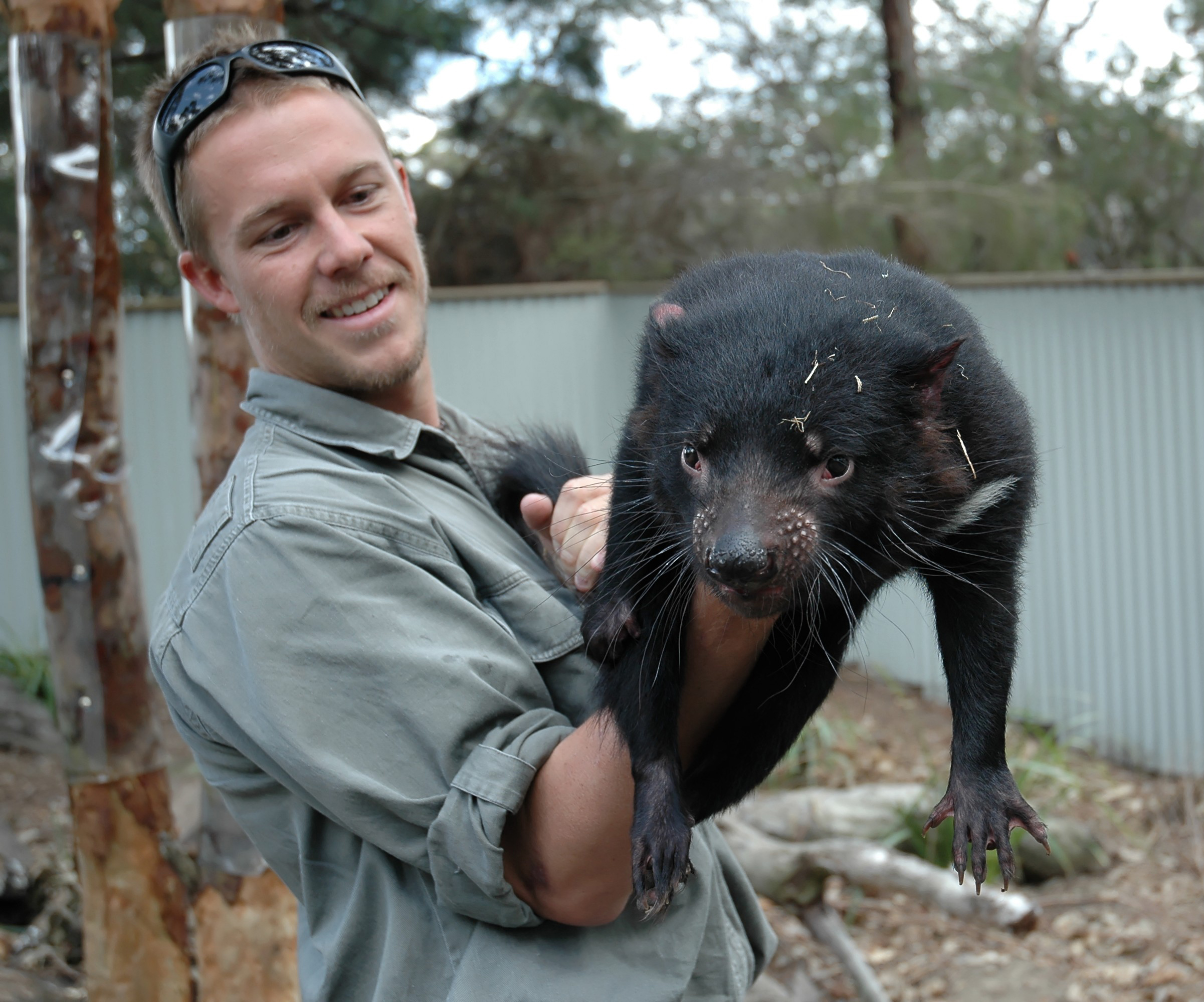Devilish Decoding: Genomes May Help Save Tasmanian Devils

The genetic code for two Tasmanian devils named Spirit and Cedric may help preserve a healthy population of these large, carnivorous marsupials threatened with extinction by a devastating, infectious cancer, scientists say.
In the past 15 years, a cancer that spreads by physical contact — when cancerous cells are transferred from one animal to another — has been devastating the Tasmanian devils, which inhabit the Australian island of Tasmania. Once an animal has contracted the infection, which is believed to happen when they bite one another, tumors grow on its face and neck and eventually starve the animal to death. An infection by the cancer, known as Devil Facial Tumor Disease, is 100 percent fatal.
To prevent the devils from becoming extinct, conservations are catching some and keeping them safe in captivity while the cancer runs its course in the wild. Later, these animals could re-establish a wild population. [7 Devastating Infectious Diseases]
This strategy will be more effective if genetic information is used to help select the animals to be saved, according to an international group of scientists. Genetic variation is crucial for a healthy population, because it allows organisms to better respond to threats, like disease or habitat change.
European settlers dubbed the animals devils because they were fierce, large toothed and growled and screamed when annoyed, according to the Tasmanian Devil Genome Project.
Devil DNA
The researchers, led by Webb Miller and Stephan Schuster at Pennsylvania State University and Vanessa Hayes, now at the J. Craig Venter Institute, deciphered the full genetic blueprints, known as genomes, for two devils infected by the cancer. From these genetic sequences, they selected 1,536 points in which a variation in the genetic code occurred. They then looked at the variation at these points for 175 devils. This process gave them a sense of the diversity that exists among the devils.
Get the world’s most fascinating discoveries delivered straight to your inbox.
To get a idea of how devil DNA had changed through time, the team looked at some of the same genetic variations in nine devils preserved in museums, with the oldest dating back a century or more. [Tasmanian Devils Being Wiped Out by Social Ties]
"We think the goal when you are selecting animals should be to, as much as possible, restore the (patterns of genetic variation) that existed in the past. But what we saw suggested, well, they really hadn't changed all that much," Miller told LiveScience.
Using clues from the devils' genetic blueprints, conservationists should be able to recreate a healthy population of devils, Miller and colleagues conclude. They suggest the devils' range could be divided into as many as seven zones and an equal number of devils taken from each zone to ensure a healthy future population.
An infectious cancer
Although it does not appear to be a recent phenomenon, low diversity among the devils may play a role in the cancer's success. Unlike other cancers, which derive from uncontrolled proliferation of cells within an organism, this cancer is a sort of transplant.
In other animals, the immune system would recognize the tumor cells as "non-self" and attack. However, because all devils are so genetically similar, scientists believe they have lost this ability, according to the Tasmanian Devil Genome Project.
The researchers also sequenced the genome from a tumor found on one of the two devils, named Spirit. They found that while it did contain some of her DNA, the tumor did not share her genome and was, therefore, not derived from her cells.
The 1,536 points examined in this research were only markers; they were not associated with specific traits in the devils. Ideally, Miller would like to refine the analysis, and replace these markers with more carefully chosen variations, including some that could be associated with resistance to the cancer.
The other devil, Cedric, showed resistance to some strains of the cancer, but eventually succumbed to the disease.
The research appears online today (June 27) in the journal Proceedings of the National Academy of Sciences. It was funded by the Gordon and Betty Moore Foundation.
You can follow LiveScience writer Wynne Parry on Twitter @Wynne_Parry. Follow LiveScience for the latest in science news and discoveries on Twitter @livescience and on Facebook.

